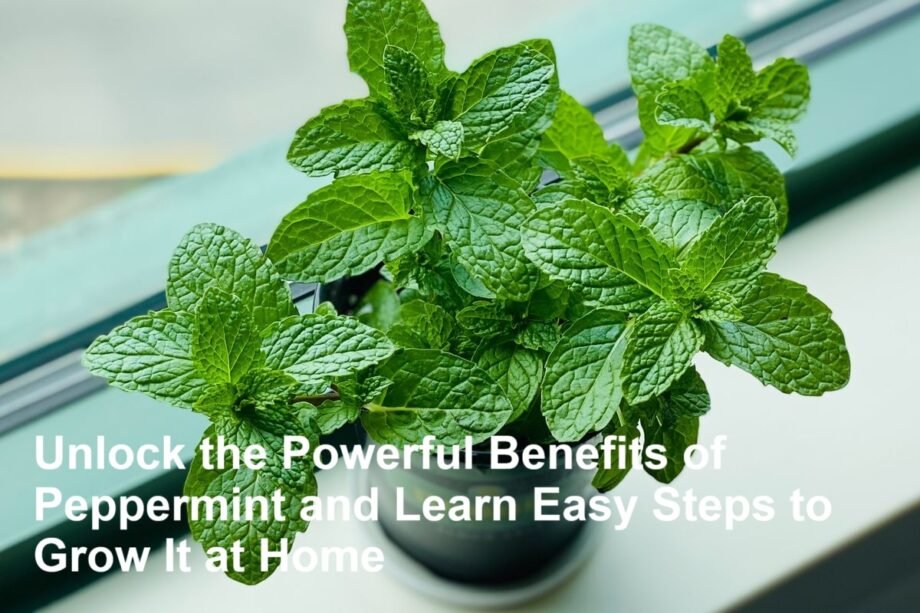Introduction
Peppermint is one of the most popular and versatile herbs known for its refreshing aroma, invigorating flavor, and numerous health benefits. Whether used as an essential oil, in teas, or as a natural remedy, peppermint has proven advantages for digestion, relief from headaches, stress reduction, and more. In addition to its health benefits, peppermint is easy to grow at home, making it a valuable addition to any herb garden.
Health Benefits of Peppermint
Peppermint (Mentha piperita) has been used for centuries across the globe for its medicinal and culinary properties. Here are some of the main benefits that make peppermint a popular choice:
- Digestive Health:Peppermint relaxes the muscles of the gastrointestinal tract and can help alleviate symptoms of indigestion, bloating, and irritable bowel syndrome (IBS).
- Headache Relief:The menthol in peppermint oil acts as a natural pain reliever for tension headaches and migraines when applied topically.
- Respiratory Benefits:Its cooling effect can soothe sore throats and improve breathing when inhaled or used in steam therapy.
- Stress Reduction:Peppermint’s refreshing scent can help reduce mental fatigue and improve concentration.
- Antimicrobial Properties:Peppermint oil has antibacterial and antiviral effects, which can assist in oral hygiene and skin care.
These benefits highlight why peppermint is widely trusted by herbalists and medical experts alike.
How to Grow Peppermint: A Step-by-Step Guide
Peppermint is a hardy herb that thrives outdoors or indoors with minimal care, making it ideal for beginners and seasoned gardeners. Follow these steps to successfully grow peppermint at home:
- Choosing the Right Location
Peppermint prefers partial to full sunlight, but it can tolerate shade. Choose a spot where it gets about 3-6 hours of sunlight daily. If growing indoors, place the pot near a bright window.
- Selecting Soil
Use well-draining, fertile soil rich in organic matter. Peppermint thrives in slightly acidic to neutral soil with a pH between 6.0 and 7.0.
- Planting
You can plant peppermint from seeds, cuttings, or nursery-grown plants. Using cuttings or established plants is recommended for faster growth. Space plants about 18-24 inches apart if planting in the ground.
- Watering
Keep the soil moist but not soggy. Peppermint requires regular watering, especially during dry periods. Avoid waterlogging to prevent root rot.
- Maintenance
Peppermint tends to spread aggressively, so consider using containers or garden borders to control growth. Regular pruning encourages bushier growth and extends the plant’s life.
- Harvesting
Once the peppermint plant reaches 6-8 inches in height, harvest leaves by snipping stems above a leaf node. Fresh peppermint leaves can be used immediately or dried for future use.
Additional Tips and Precautions
- To maximize the essential oil content, harvest peppermint leaves just before the plant flowers.
- Peppermint can crossbreed with other mint species. For a pure variety, keep it separate from other mints.
- People with allergies or sensitivities to menthol should use peppermint products cautiously.
- Consult healthcare professionals before using peppermint for medicinal purposes, especially during pregnancy or if taking medications.
Why Peppermint Is a Smart Addition to Your Lifestyle
The versatility, health benefits, and easy cultivation of peppermint make it an outstanding herb to have at home. Its ability to enhance wellness naturally and its aromatic presence in your living space contribute to an improved quality of life. Growing your own peppermint garden also promotes sustainability and self-reliance.









